City Directories and History: “The two room Mary Fields School was built for the island’s black children in the early 1930s. Leftover wood was used to construct desks for the students. The school was integrated after the last white child graduated from the White School House in 1962. The school was immortalized by Pat Conroy in his book, The Water is Wide. When the Daufuskie Island Elementary School was built in 1997, the Mary Fields School was closed. The building was recently renovated and is used for church and civic activities.” (Information courtesy of the Daufuskie Island Historical Foundation)
Daufuskie Island Historic District includes the geographic entirety of this South Carolina sea island. Accessible only by boat, Daufuskie contains 5,200 acres of mostly high dry land. The district’s character is defined by eighteen properties of particular historic and/or architectural note, and fifty-six contributing sites or structures.
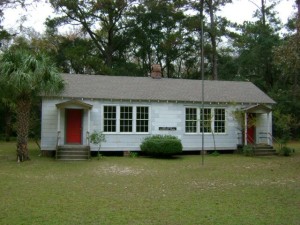
Image courtesy of Preservation S.C.
Wooded tracts account for another 167 contributing properties. Most of the buildings consist of folk housing, which is concentrated in two building complexes, both on the island’s western side. They were constructed from 1890-1930, but reflect a much earlier building technology. They are significant architecturally as a survival form. The buildings also include educational, religious, and public buildings which serve the whole population. The design of Daufuskie’s two lighthouses has architectural
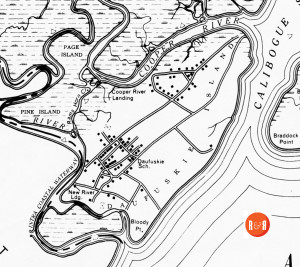
Daufuskie Island map showing the location of the school in 1959. An enlargeable version of this map is available under the More Information link.
significance in its structural combination of a functioning lighthouse with living quarters. Other areas of significance are historical in nature. Military engagements of note during the Yemassee and Revolutionary Wars took place on Daufuskie. In addition, buildings, sites, and structures represent Daufuskie’s antebellum plantation society based on the cultivation of long staple cotton as well as the history of the island in the early twentieth century when life revolved around the oyster industry, logging, and truck farming operations. Daufuskie’s cultural resources illustrate a three-century long history (ca. 1700-1930) that has evolved with a minimum of outside influence. Listed in the National Register June 2, 1982. Click here to see the nominating form for the properties. [Courtesy of the SC Dept. of Archives and History]
Teachers punished the children by whipping them if they were late for school in the morning or if they did not get their lessons. Punishment also took the form of a whaling across the knuckles with a long black pointer stick if the children were at the blackboard and made a mistake in an arithmetic problem. For talking or being mischievous their hands were opened and given a few licks with a ruler or, in some instances, a small sassafras stick across the palms of the boys. Some had to stand in the comer of the room—perhaps on one foot. Unless the grade was mastered, the child was not promoted. Some remained in one grade for as many as three years.
“Desks” in the Praise House were benches with no backs but with a place in front to put books. Slates and slate pencils were used. “Blackboards” were two, fourteen-inch wide boards, nailed across two-by-fours and painted black so that chalk could be used. The School Census of 1921 lists these black students attending school on Daufuskie: Bentley—Abraham, Ella, Arthur, Eddie; Brown—Rosa; Brisbane—Agnes; Ford—David, Howard, Viola; Gm/ir—Freddie, Joseph, Louie; Gordon—Dennis, James; Graves— Abraham; Hamilton—Eugene, Mabel, Henry, Mary Jane; Holmes— Leroy, Tilman, Herman; Heyward—Alice, Leathia, Arthur, Thelma; Hudson—Mirah; Haynes—Charlotte; Johnson—Ernest, Julia; Martin—Peter,Sylvia, Carrie; MUler—Wilhelmina, Kit, Thomas; Mongin—Lillie, Johnny, Hester; Myers—Josephine, Cely, Richard, Charles; Robinson—Charles, Susan, Willie, Theresa, Amelia, Gustave; Smalls—Bromice; Walker—David; White—Cerisa. (This list is continued in the Mary Fields Elementary segment.) (Information courtesy of the Island Named Daufuskie by Billie Burn, Billie Burn Books – 1991)
————-
The 1981 historic survey map of Daufuskie Island does not correspond to the numbering system on the historic survey cards – pictures. R&R has noted on each page the correct corresponding number. See enlargeable maps of Daufuskie Island’s historic survey at: Daufuskie Historic Survey Maps.
Click here for additional information on Daufuskie Island. See additional maps of Daufuskie Island under the More Information links.
Visit the Daufuskie Island Historical Foundation’s (DIHF) websites to see how you might engage in helping preserve the local Daufuskie Island’s culture and architecture.
Stay Connected
Explore history, houses, and stories across S.C. Your membership provides you with updates on regional topics, information on historic research, preservation, and monthly feature articles. But remember R&R wants to hear from you and assist in preserving your own family genealogy and memorabilia.
Visit the Southern Queries – Forum to receive assistance in answering questions, discuss genealogy, and enjoy exploring preservation topics with other members. Also listed are several history and genealogical researchers for hire.
User comments welcome — post at the bottom of this page.
Please enjoy this structure and all those listed in Roots and Recall. But remember each is private property. So view them from a distance or from a public area such as the sidewalk or public road.
Do you have information to share and preserve? Family, school, church, or other older photos and stories are welcome. Send them digitally through the “Share Your Story” link, so they too might be posted on Roots and Recall.
Thanks!
User comments always welcome - please post at the bottom of this page.
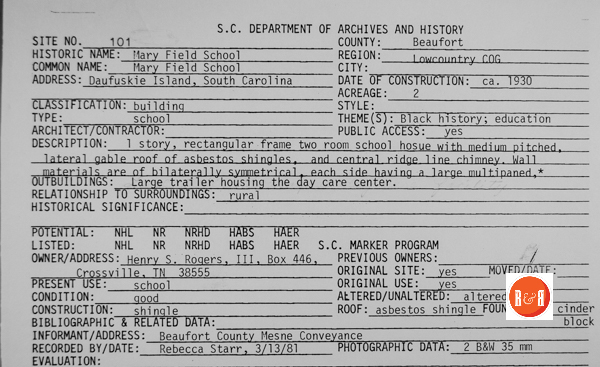
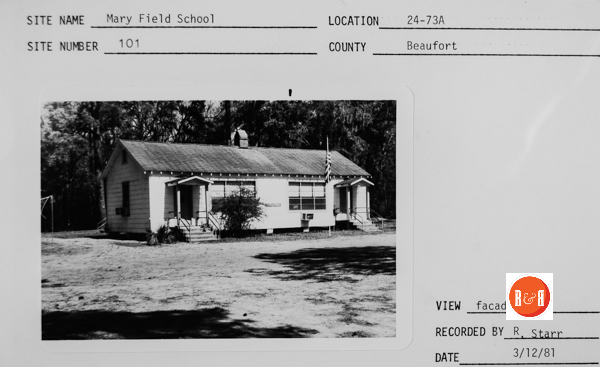
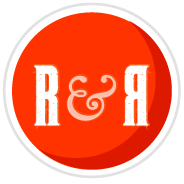
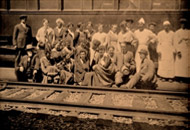
Share Your Comments & Feedback: